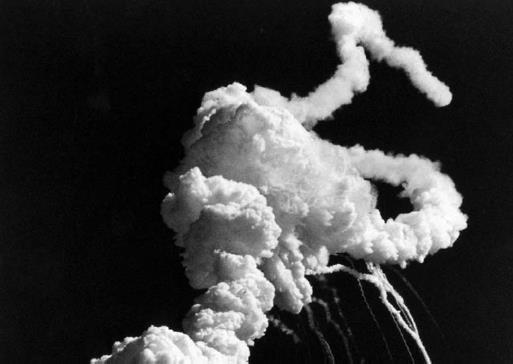Natural and Man-Made DisastersChallenger |
What happened to Challenger? |
On January 28, 1986, at Cape Canaveral, Florida, the National Aeronautics and Space Administration (NASA) launched the twenty-fifth mission of its space shuttle program. The Challenger carried a crew of seven, including Christa McAuliffe (1948–1986), who was to be the first schoolteacher in space. She was slated to broadcast a series of lessons to schoolchildren throughout America. The crew’s commander was Francis Scobee (1939–1986), who had piloted a 1984 shuttle mission; the pilot was Michael Smith (1945–1986), who was making his first flight in space; mission specialists Ellison Onizuka (1946–1986), Ronald McNair (1950–1986), and Judith Resnik (1949–1986) were all experienced space travelers; and payload specialist Gregory Jarvis (1944–1986) was making his first space flight.
That cold and clear January morning, the Challenger’s takeoff was delayed by two hours. Freezing temperatures overnight had produced ice on the shuttle and launch pad, which prompted NASA to conduct inspections to assess the condition of the craft. At 11:38 A.M., Challenger was launched into space. Just 73 seconds later and at an altitude of 48,000 feet—the craft still in view of the spectators on the ground—Challenger burst into flames. While NASA controllers were aware of what had happened (they had, among other things, heard Smith utter, “Uh oh,” just one second prior to the explosion), it took a moment for the spectators to understand. But as the fireball grew bigger and debris scattered, the spectators, including family and friends of the crew, fell silent.
The crew, inside a module that detached from the shuttle during the blowup, evidently survived the explosion but died upon impact after a nine-mile free-fall into the Atlantic Ocean. Six weeks after the disaster, the crew module was recovered from the ocean floor; all seven astronauts were buried with full honors.
Investigations into the crash revealed that the O-rings (seals) on the shuttle’s solid rocket boosters had failed to work; due to the low temperatures, the O-rings had stiffened and thereby lost their ability to act as a seal. A government commission recommended a complete redesign of the solid rocket booster joints, a review of the astronaut escape systems (to work toward achieving greater safety margins), regulation of the rate of shuttle flights to maximize safety, and a sweeping reform of the shuttle program’s management structure. The space agency retrenched. It was almost three years later—on September 29, 1988—before another American shuttle flew in space.

